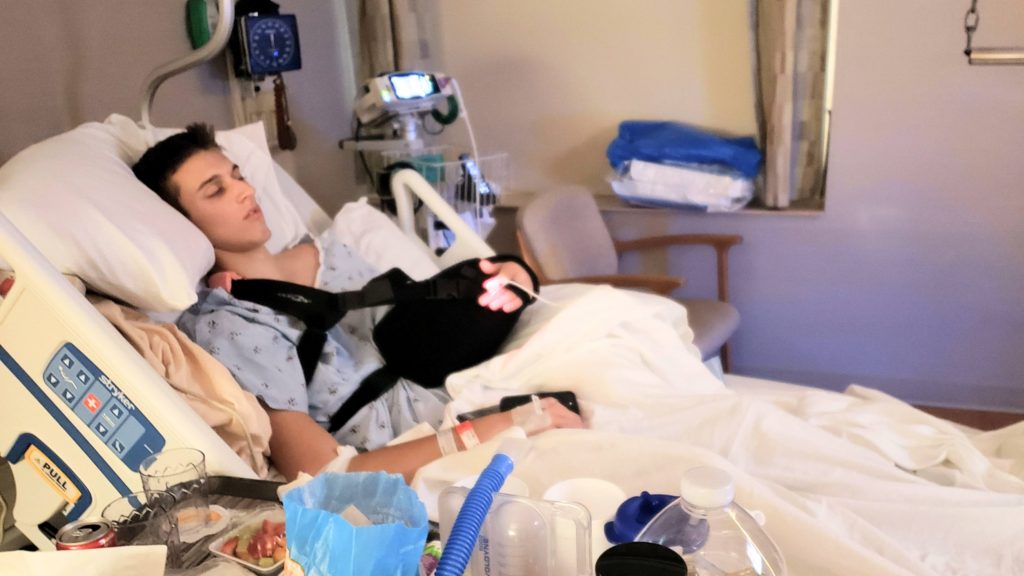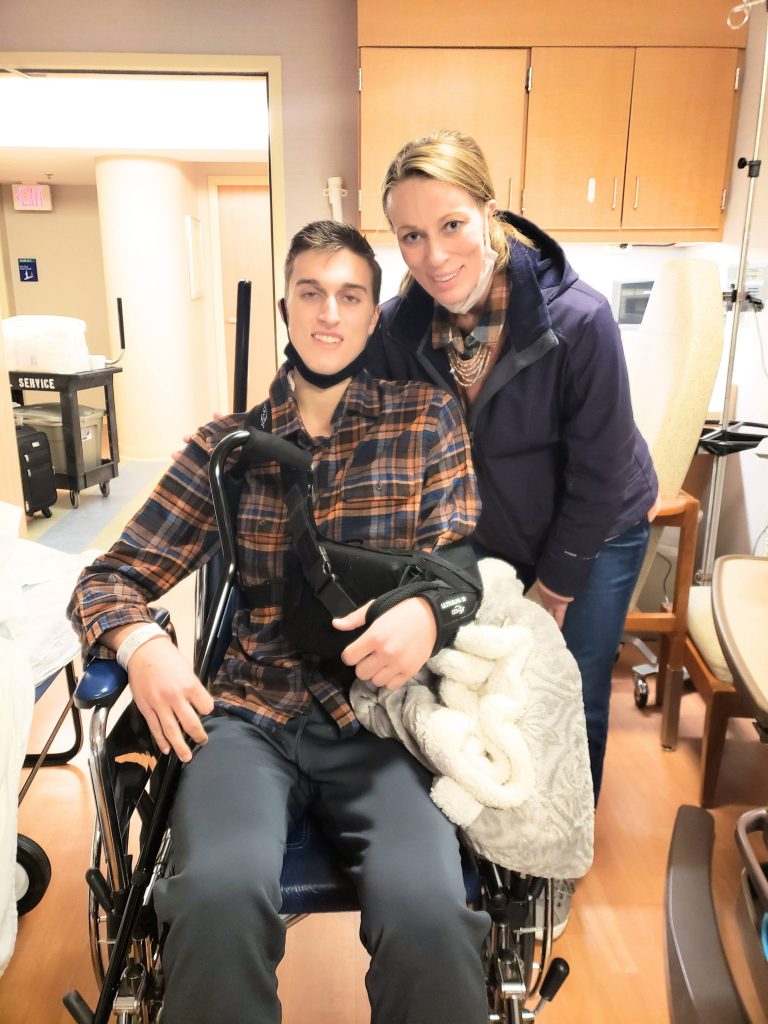Twenty-four years ago, Bobbi Heinold, 17, was diagnosed with facioscapulohumeral muscular dystrophy, a genetic muscle condition characterized by weakness, especially in the face, shoulder blades and upper arms. Doctors told her it could affect her quality of life.
Bobbi and her mom drove from their Indiana home to Mayo Clinic in Rochester, Minnesota, to learn about her options.
Bobbi eventually had the surgery. One member of the surgical team was Joaquin Sanchez-Sotelo, M.D., Ph.D., then a Mayo Clinic orthopedic surgery fellow.
In November 2020, Bobbi returned to Mayo for the first time in years ― not as a patient, but as a mom. Her son Daniel, 17, had the same condition and was scheduled for surgery with Dr. Sanchez-Sotelo, now a Mayo Clinic orthopedic surgeon and chair of the Division of Shoulder and Elbow Surgery at Mayo Clinic.
Watch: Mother and son share rare muscle disorder.
Journalists: This broadcast-quality video patient pkg (2:45) is in the downloads at the end of the post. Please courtesy: "Mayo Clinic News Network." Read the script.
For the safety of its patients, staff and visitors, Mayo Clinic has strict masking policies in place. Anyone shown without a mask in the video was recorded prior to COVID-19 or recorded in an area not designated for patient care, where social distancing and other safety protocols were followed.
__________________________________________________
"Hello, welcome back," Dr. Sanchez-Sotelo says at Daniel's first in-person follow-up since surgery. "How are you?"
Bobbi first noticed Daniel's muscle weakness around his shoulders when he was a seventh grader. In ninth grade, he went to see experts in orthopedics, neurosurgery, and physical and occupational therapy in Chicago, near their home. His symptoms were similar to his mom's: muscle weakness, winging of the shoulder blades.
"She never really talked about it around me until I was a little older and we could start seeing the symptoms of it," Daniel says. "And then she just started explaining like kind of what she had and what I could possibly go through in the future."
Facioscapulohumeral muscular dystrophy usually progresses slowly. Muscles in the face, shoulder blades and upper arms are especially affected.
"The condition we're talking about today is called facioscapulohumeral muscular dystrophy," Dr. Sanchez-Sotelo says. "In essence, what happens is that the muscles that control the position of the shoulder blade in space start to get weaker and weaker and weaker over time. And the shoulder blades start to migrate off the chest wall, and it really affects the function of the upper extremity of the patient."
Throughout her diagnosis, surgeries and recovery, Bobbi relied on her mom, Luann Gerber, who drove her to and from Mayo Clinic, and supported her after her surgeries and recovery.
"I've had to rely on my mom a lot," Bobbi says. "She went through this with me, and going through it on the parenting side of it has been very, very different than being the one who's personally having the procedure. In a lot of ways, I think, even though the surgery is really hard, and painful and difficult, that was easier than watching him go through it."
Daniel appreciates his mom being a sounding board.
"I wasn't blind going into this surgery or having this condition," Daniel says. "And I had somebody who I could talk to if I had any questions about it."
Bobbi has experienced a range of emotions as both patient and mom. Now Bobbi understands what her mom might have felt.
"It was it was very difficult ― very, very difficult to watch him go through it," Bobbi says. "And in some ways, it was easier because I knew the benefits coming out of it."
During surgery, Dr. Sanchez-Sotelo stabilized Daniel's shoulder by fixing the left shoulder blade to his ribs.
"This procedure is somewhat uncommon, which basically involves physically connect the shoulder blade to the ribs," Dr. Sanchez-Sotelo says. "And typically, the bone graft comes from the patient's own pelvic waistline. Those are moved to the space between the ribs and the shoulder blade, and compressed with the cables on the plate."

After their surgeries, Bobbi used a body cast to stabilize her shoulder, while Daniel had an immobilizer brace. Daniel knows that his mom can empathize with him in ways others can't.
"Whatever I was going through, I knew she'd already been through it," Daniel says. "So I could always ask her how she got through this or what she did when she was in this situation. So it's just nice to have somebody that's done it, that knows what they're talking about, that can relate to it. And that can feel the type of sympathy for me that nobody else can."
Bobbi, Daniel and Dr. Sanchez-Sotelo are hopeful for Daniel's future.
"So once the shoulder blade the scapula heals to the ribs, it is a major improvement in their quality of life," Dr. Sanchez-Sotelo says.
"The ability that I had for the last 24 years, I have been able to hold and lift, and carry, my babies," Bobbi says. "And I wouldn't have necessarily had that ability before."
"It's just kind of nice to know that I'm not going to lose out on all that (playing sports with my friends) now because of the surgery," Daniel says. "And because of the work that I've been able to have done here, it just makes my future brighter."
Daniel will graduate from high school this year and is hoping to undergo a second surgery after graduation. He's been accepted to Purdue University for civil engineering. He'll likely take online classes for first semester and, if the doctor approves, move to campus for the second semester.
"The fact that he's going to have the ability to go live a pretty normal life, he has a very bright future ― and that to me is a gift," Bobbi says.















